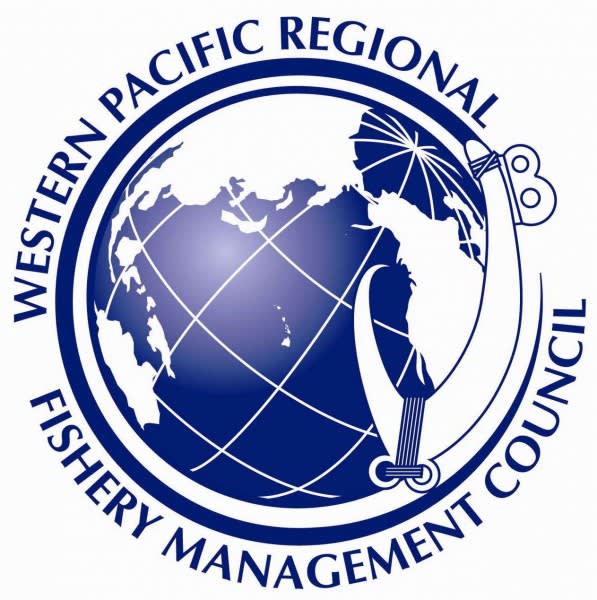US Should Refuse Quota Reduction for Hawaii Bigeye Tuna Says WPFMC
OutdoorHub 10.30.13

he United States should not accept a reduction in the bigeye tuna limit for the Hawaii longline fishery, according to the Western Pacific Regional Fishery Management Council, which concluded a four-day meeting in Honolulu today. Authorized by Congress to manage fisheries seaward of State and Territorial waters in the US Pacific Islands, the Council noted that the Hawaii longline fishery operates several thousand miles from the equatorial Pacific, where nearly 90 percent of bigeye tuna fishing mortality occurs.
The tuna quotas for the Western and Central Pacific Ocean (WCPO) are internationally formulated by the Western and Central Pacific Fisheries Commission (WCPFC), of which the United States is a member. The WCPFC is scheduled to meet Dec. 2 to 6, 2013, in Cairns, Australia. The priority agenda item is the management of tropical tunas, particularly bigeye tuna, which has been experiencing overfishing for about two decades. A proposal developed by a WCPFC working group that met in August in Japan would have the Hawaii longline fishery quota for bigeye reduced by 45 percent. If approved and implemented, the measure could shut the Hawaii bigeye tuna fishery about July each year.
The Council noted that the WCPFC’s previous conservation and management measures (CMMs) have failed to prevent increases in fleet capacity, fishing effort and total catch of tropical tunas. Further, bigeye overfishing continues in the WCPO primarily from its incidental catch by the purse-seine fishery when fishing on fish aggregation devices (FADs). The Council noted its continued concern about the effectiveness of the proposed purse-seine measures to achieve effective reductions of juvenile bigeye fishing mortality. It said that the WCPFC’s treatment of purse seine and longline fisheries is inequitable and scientifically unjustified. The WCPFC has imposed bigeye quotas on the longline fishery and fishing day limits for the purse-seine fishery. The purse-seine take of bigeye tuna has increased under this approach.
The Council directed its staff to work with the National Marine Fisheries Service (NMFS) to develop spatial management approaches for bigeye tuna for incorporation in future US CMM proposals to the WCPFC. The Council also recommended that the following research and education/outreach activities related to tuna management be undertaken:
- The University of Hawaii’s Pelagic Fisheries Research Program complete and publish its bigeye otolith stable isotope study, which helps to resolve spatial distribution and connectivity of Hawaii yellowfin tuna, and expand the bigeye study to include sampling of otoliths from the northwestern Pacific and other locations not yet sampled.
- Convene a workshop to design a collaborative study of bigeye movements in the Pacific and the data requirements to support such a study.
- Collect the reports of various Hawaii tuna tagging projects and summarize and disseminate the findings in an accessible format to the public.
The Council also made the following recommendations, among others:
- That a shark fishery resource assessment in the Mariana Archipelago be conducted to include the Council, NMFS and Mariana fishermen. Council members from Guam and the Commonwealth of the Northern Mariana Islands (CNMI) said shark depredation has escalated. Sharks are attacking artificial lures and are following vessels and waiting for fish to be hooked.
- That the NOAA Assistant Administrator for Fisheries be reminded that, regarding the Billfish Conservation Act, the intent of Congress is to maintain the ability of Hawaii, American Samoa, Guam and CNMI fisheries to send billfish to the US mainland for sale as well as allow billfish landed in American Samoa, Guam, and CNMI by foreign vessels to be sold in Hawaii.
- That the US Coast Guard prioritize patrols of the US exclusive economic zone (EEZ) to detect foreign fishing violations and acquire or direct additional patrol assets for the Western Pacific Region.
- That a Fishery Data Collection and Research Committee be formed as a committee of the Council and be comprised of the heads of the Council, the American Samoa Department of Marine and Wildlife Resources, Guam Department of Agriculture, CNMI Department of Land and Natural Resources, Hawaii Department of Land and Natural Resources, Guam Bureau of Statistics and Plans and NMFS Pacific Islands Fisheries Science Center, as well as a representative from US Fish and Wildlife Service.
- That NMFS be notified of the Council’s concurrence with the positive 90-day finding in response to the petition to delist the North Pacific humpback whale population under the Endangered Species Act. The Council reiterated its previous recommendation to recognize the recovery and delist the North Pacific humpback whales and looks forward to a timely 12-month finding from NMFS.
- That the Department of Defense (DOD) and Joint-Region Marianas be reminded of the fishermen’s concerns regarding the expansion of the closure around Farallon de Medinilla, a prime bottomfish ground, and the military’s plans for the islands of Tinian and Pagan. – That Council staff reviews the current CNMI bottomfish fishery and its existing management regime and develop an options paper for Council consideration that would remove the large vessel area closure for bottomfish in the southern portion of the archipelago.
- That Council staff assist the Governor of American Samoa in reviewing America Samoa’s Deeds of Cession to determine applicability to the Rose Atoll Marine National Monument, National Marine Sanctuary of American Samoa and other federally managed areas.
- That Council staff assists the American Samoa government in developing standards to prevent illegal seafood imports, which currently may be undercutting the price of locally caught fish, and to develop seafood safety and handling training programs and other marketing strategies to promote local seafood markets. This would benefit the local economy and enhance food security.
The Council concluded its meeting by reappointing its 2013 officers as its officers for 2014, i.e., Arnold Palacios (CNMI) as chair and Michael Duenas (Guam), Edwin Ebisui (Hawaii), Richard Seman (CNMI) and William Sword (American Samoa) as vice chairs.

